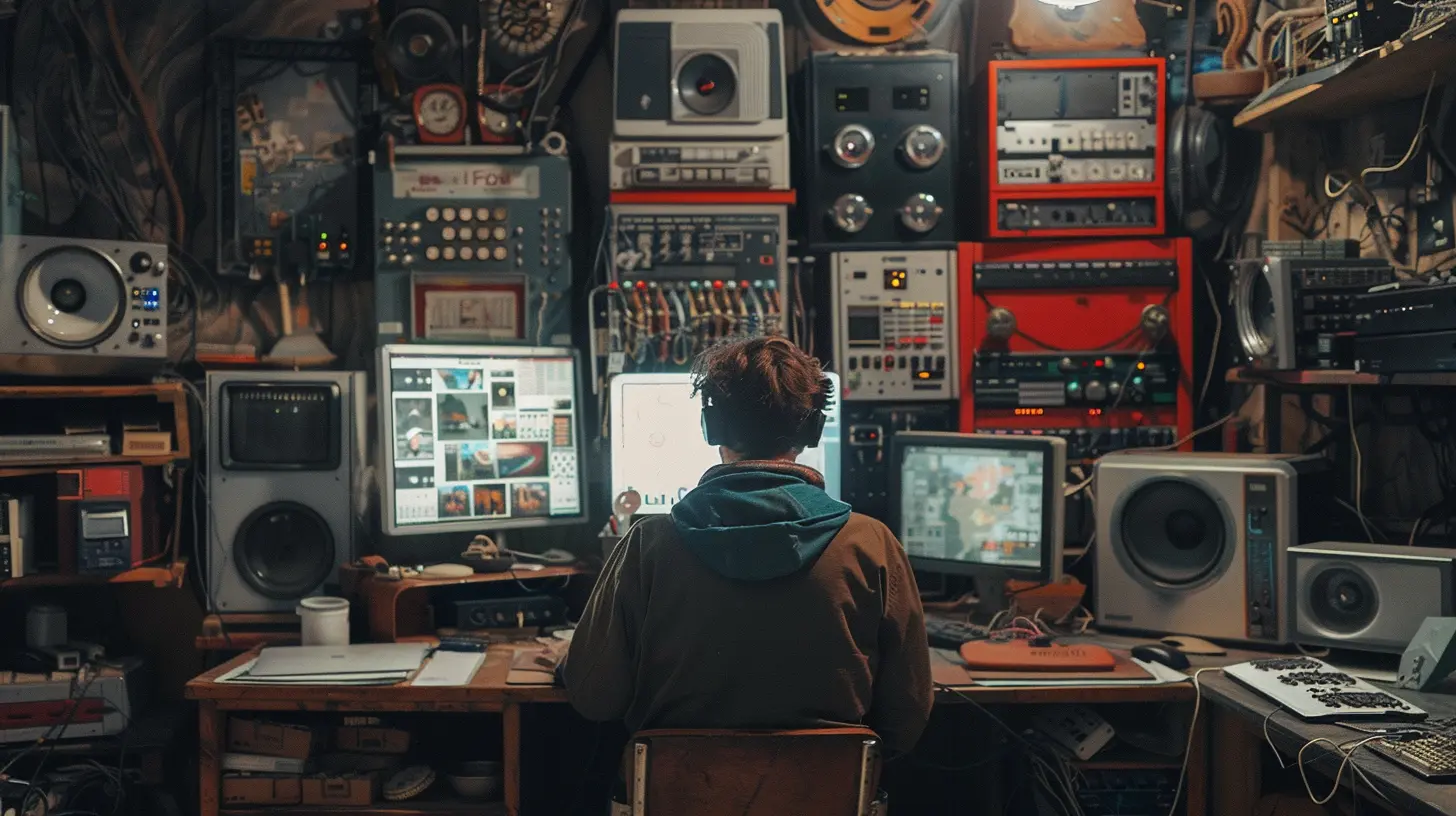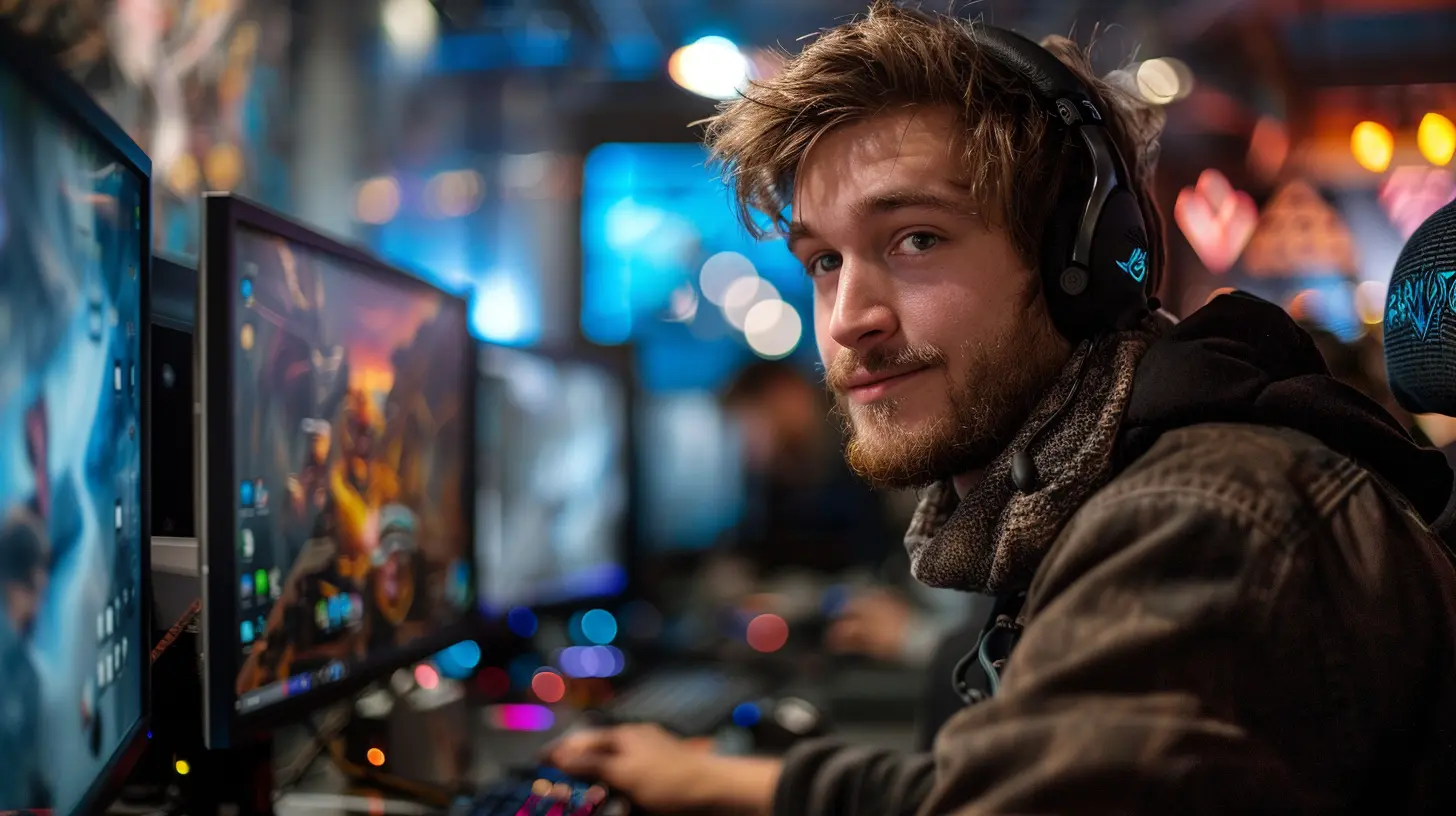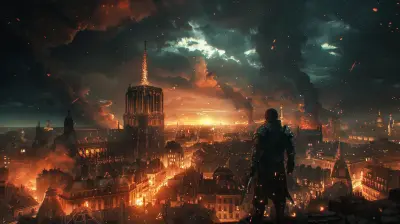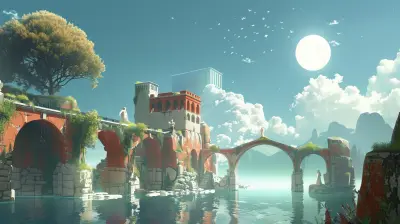Exclusive Insights from The Lead Designer of Game Y
23 June 2025
Ever wondered what it's really like behind the scenes of your favorite game? Like, what goes through the mind of the person directing the whole ship? Today, we're peeling back the curtain and diving deep into the creative world of one of the most captivating titles to hit the shelves recently—Game Y. And who better to guide us than the lead designer themselves?
We got the chance to sit down, laugh, geek out, and pick the brain of the genius behind Game Y’s magic. Think of this as a fireside chat with the person responsible for the game’s heart and soul. So, grab your controller (or mouse), settle in, and let’s get into this.

Meet the Mind Behind Game Y
First things first—who is this mastermind?Alex Chen isn’t just your average game designer. Picture someone who grew up memorizing cheat codes, sketching level designs in school notebooks, and dreaming of worlds not yet built. Fast forward a couple of decades and bam, Alex is now the lead designer at SpiralCode Studios, the creative force behind Game Y.
When we asked Alex how it all began, he chuckled, “Honestly? I just never stopped playing. I turned my obsession with games into a career. My mom still thinks I do something ‘in computers.’ She has no idea.”
Relatable, right?
Alex’s passion spills into everything. You feel it in the rich characters, the detailed environments, and that satisfying crunch when a jump lands just right. But what makes Game Y feel so different? Let’s get into that.
The Birth of Game Y: Where Ideas Turn Into Worlds
Every great game starts with a spark of inspiration. For Game Y, the idea came during a road trip.Yeah, really. Alex had been toying with a concept for years—a game that merged the storytelling depth of RPGs with the fluid motion of action-platformers. But it wasn’t until a quiet drive through mountain roads that it all clicked.
“Nature has a funny way of organizing chaos,” Alex explained. “I saw the way trees moved with the wind and thought, ‘What if the world in the game responded emotionally like that?’ That’s how the idea of a reactive ecosystem was born.”
Boom. From a car window to complex game systems.
Game Y’s world isn’t static. The forest remembers your choices. Cities evolve because of your actions. Even the weather systems have moods. Sounds wild? That’s the kind of innovation Alex thrives on.
Building Something Real: Why Emotion and Connection Matter
Let’s be real here. Game mechanics are cool and all, but if we don’t feel something while playing, it’s just pixels on a screen.That’s why Alex insists on emotion-first design.
“Gameplay is the heartbeat, but emotion is the soul,” Alex said. “Without it, it’s just noise.”
From the very beginning, Game Y was designed to make players care. Characters have genuine backstories. Side quests tie into the main story in meaningful ways. Even the enemies—some you’ll feel bad about fighting.
Remember that one NPC wearing the red scarf crying in the corner of the tavern? That’s not just filler. There’s a full-on questline hidden in that moment of vulnerability. If you ignored them, you missed a whole emotional arc. It’s that kind of detail that makes Game Y feel alive.
Mechanics with Meaning: Designing Player Freedom
A lot of games talk about freedom, but end up railroading you into pre-picked outcomes. Not Game Y.“We wanted freedom to actually mean freedom,” Alex emphasized. “If you want to complete the game without fighting a single boss, do it. You might have a completely different story than someone else.”
That’s not just good design—it’s risky design. Giving players the reins means creating hundreds of variables, all of which need balancing.
One example? The “Relationship Tracker” mechanic. Instead of simple friend-or-foe binary systems, every interaction you make—whether that’s giving an apple to a hungry kid or insulting a guard—feeds into a nuanced reputation web.
You could unintentionally become a local hero. Or an infamous outlaw. Your choice. Your consequence.
The Art Side of Things: Visual Language & Vibe
Game Y doesn’t just play well—it looks stunning. And that’s no accident.“I told the art team early on, I want this to look like someone painted their dreams,” Alex said.
Mission accomplished. The game’s dreamy pastels, glowing flora, and otherworldly architecture aren’t just pretty—they tell a story. Every region uses color language to evoke emotion.
- Reds mean danger or passion.
- Blues offer moments of calm or reflection.
- Yellows? Opportunity or curiosity.
It’s a level of intentionality you probably didn’t notice on your first playthrough, but your brain felt it. That’s the magic of good visual design working hand-in-hand with narrative goals.
Crunch Culture and Mental Health: A Fresh Take
Game dev isn’t exactly known for healthy schedules. But Alex and SpiralCode are drawing a line in the sand.“We made a vow: No crunch. No burnout. If we’re making a game about empathy and connection, we need to treat our devs with the same respect.”
Power move.
And guess what? It worked. Game Y was delayed twice, sure—but each delay came with transparency. Not robotic PR statements. Actual heartfelt notes from the team about needing more time to make something great without hurting themselves.
Fans respected that. And the result? A smoother, more polished final product that still makes waves months after release.
Secrets You Totally Missed (And You’ll Want to Replay)
During our chat, we had to ask—what are some hidden gems most players don’t catch?Alex grinned. “Oh, there’s so much. We love Easter eggs. For instance, if you stand still in the Whispering Woods and listen closely, the trees hum the melody of the main theme. It’s super subtle.”
Mind. Blown.
There’s also a secret boss fight triggered only if you complete a specific sequence of emotes in front of the in-game fountains. Sounds silly? It unlocks one of the deepest lore revelations in the game.
And yeah, that squirrel with the monocle? He’s plotting a rebellion. Trust us.
What’s Next for Game Y?
Naturally, we had to ask—what’s on the horizon?Without giving too much away, Alex hinted at a massive expansion in the works. We're talking new biomes, deeper moral dilemmas, and even (gasp) rideable sky creatures.
“We’re not done telling this story,” Alex assured. “We listened to fans, read the feedback, and we’re building out the places you asked for.”
Also? Co-op mode. That’s all we’re saying, but yes please.
A Message from Alex to the Fans
Before we wrapped up, Alex had a heartfelt message for the Game Y community:“You all are the reason we get to make magic. Thank you for being curious, for diving deep, and for showing up. We built this world, but you brought it to life.”
Dammit, now we’re emotional too.
That’s the kind of sincerity you don’t always get from developers. But with Alex? It’s as real as pixel dust.
Final Thoughts: Why Game Y Really Hits Different
You know how some games stay with you long after the credits roll? That’s Game Y. It’s more than just solid mechanics and pretty visuals—it’s a labor of love. A game that feels alive because the people making it poured their lives into every moment.Chatting with Alex gave us a peek behind the curtain, but also reminded us of something simple: When people care deeply about what they make, it shows.
So next time you boot up Game Y and wander through its dreamy landscapes, remember—you’re experiencing someone’s dream. Someone who grew up playing just like you. Only now, they’re the ones building worlds for others to explore.
Pretty cool, huh?
all images in this post were generated using AI tools
Category:
Gaming NewsAuthor:

Stephanie Abbott
Discussion
rate this article
2 comments
Aubrey McCracken
Loved the behind-the-scenes glimpse! It’s always fascinating to hear the passion and vision behind our favorite games.
October 7, 2025 at 3:51 AM

Stephanie Abbott
Thank you! I'm glad you enjoyed the insights—passion and vision are at the heart of game development!
Xena Martin
Loved the insights! Can’t wait to see what’s next for Game Y!
June 28, 2025 at 5:01 PM

Stephanie Abbott
Thank you! I'm glad you enjoyed it—exciting things are on the way for Game Y!


